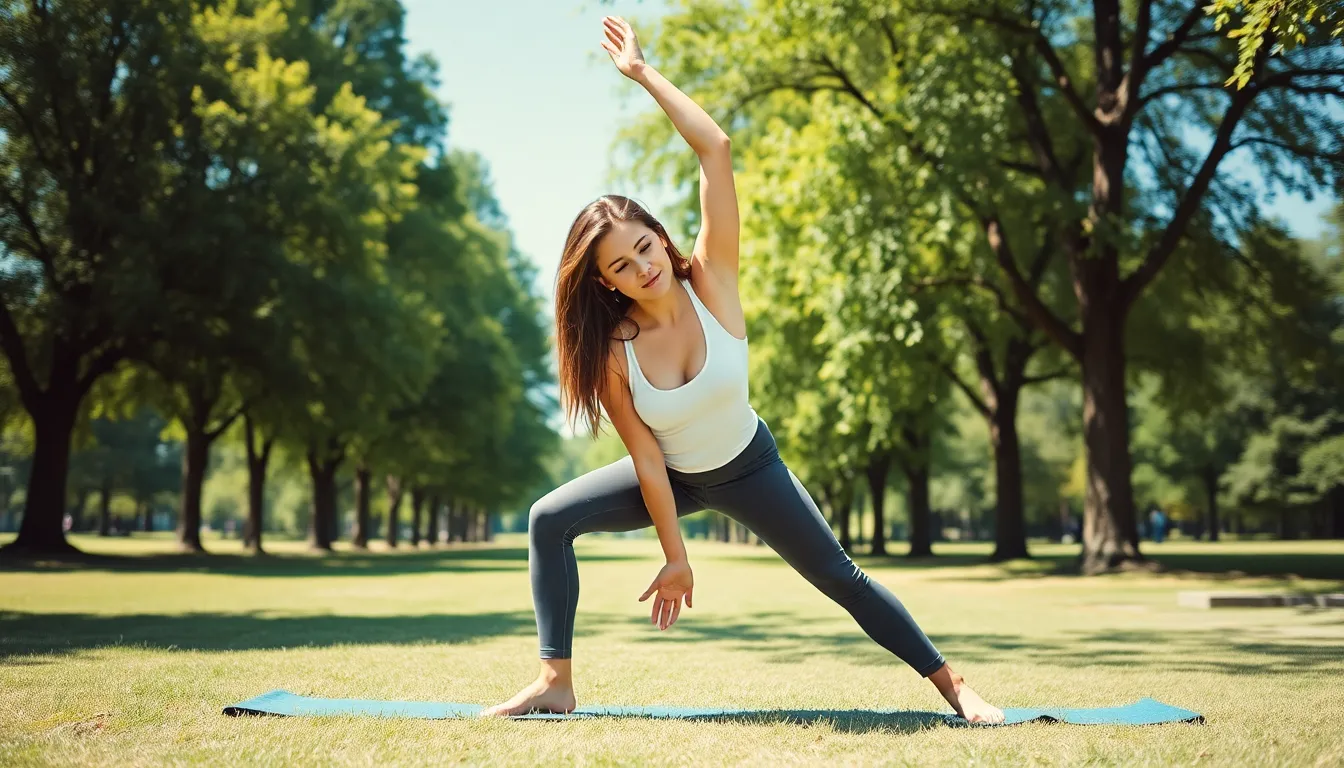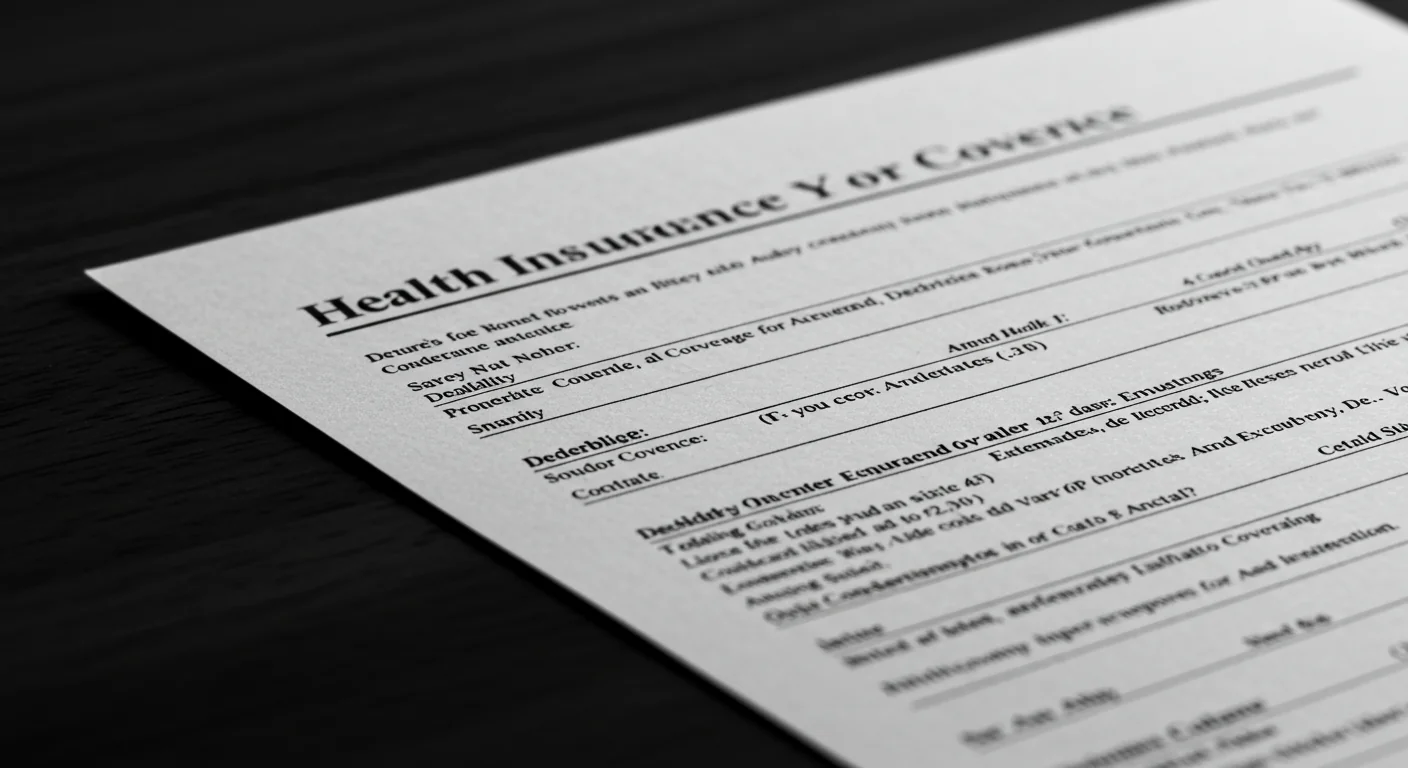In a world where most people spend their days hunched over screens, flexibility exercises are the unsung heroes of fitness. Imagine effortlessly bending down to tie your shoes or reaching that elusive cookie jar on the top shelf without resembling a pretzel. Flexibility isn’t just about showing off your yoga poses; it’s about enhancing overall health and mobility.
Table of Contents
ToggleWhat Are Flexibility Exercises?
Flexibility exercises aim to enhance the body’s range of motion. These movements increase flexibility by stretching muscles and tendons. Common examples include yoga poses and dynamic stretches. Many people incorporate these exercises into their fitness routines.
Gentle stretching promotes better circulation and reduces muscle stiffness. It also contributes to improved posture, which can offset the negative effects of prolonged sitting. Improved flexibility allows individuals to perform daily tasks more easily.
Flexibility work can also prevent injury by preparing muscles for physical activity. Engaging in these exercises aids recovery from strenuous workouts, helping muscles regain length. As a result, athletes often include flexibility training as part of their regimen.
Multiple types of flexibility exercises exist. Static stretches involve holding a position for a set period, while dynamic stretches incorporate movement. Active stretches require individuals to use their muscles to stretch, while passive stretches rely on external forces, such as a partner or gravity.
Schools and fitness centers emphasize flexibility exercises in their programs. Incorporating flexibility training into daily routines can yield significant health benefits. Short sessions before or after workouts lead to lasting improvements in mobility and well-being.
Benefits of Flexibility Exercises

Flexibility exercises provide numerous benefits that contribute to overall health and wellness. Regular practice enhances daily functioning and reduces discomfort associated with tight muscles.
Improved Range of Motion
Improved range of motion enhances daily activities. Individuals experience better mobility, making routine tasks easier, such as bending or reaching. A study published in the Journal of Strength and Conditioning Research highlights that consistent flexibility training can significantly increase joint mobility. They find that increased flexibility allows for smoother movement, reducing strain during physical activities. Incorporating exercises like dynamic stretches and yoga promotes muscle elasticity and joint health. Regular engagement in flexibility routines enables the body to adapt to physical demands without restriction.
Injury Prevention
Injury prevention serves as a critical benefit of flexibility exercises. Stretching effectively prepares muscles for activity, reducing the likelihood of strains and sprains. According to a report from the American College of Sports Medicine, individuals who consistently engage in flexibility training exhibit a lower risk of injury during sports. These exercises improve muscle coordination and balance, enhancing body awareness. Additionally, flexible muscles absorb shock better, minimizing impact-related injuries. Performing stretches before and after workouts also aids recovery, allowing muscles to heal more efficiently.
Enhanced Performance
Enhanced performance stems from regular flexibility practice. Athletes notice improvements in their performance metrics, contributing to better competition results. Research presented in Sports Medicine indicates that increased flexibility correlates with higher levels of strength and endurance. Improved flexibility allows for more extensive motion in athletic movements, translating to greater efficiency and effectiveness in activities. Performing flexibility exercises regularly cultivates muscle response times, leading to quicker reactions during sports. Increased flexibility not only enhances athletic capabilities but also promotes overall fitness and well-being.
Types of Flexibility Exercises
Flexibility exercises can be categorized into several types, each serving specific purposes and benefits. Understanding these categories helps individuals choose suitable routines.
Static Stretching
Static stretching involves holding a single position for a designated time, typically ranging from 15 to 60 seconds. This type of stretching effectively promotes muscle elongation and flexibility. For example, common static stretches include the seated hamstring stretch and the quadriceps stretch. Practicing static stretches can enhance flexibility over time, making daily movements easier and more comfortable. Incorporating static stretches into a routine after workouts helps cool down muscles while maintaining their length.
Dynamic Stretching
Dynamic stretching incorporates controlled movements that increase range of motion while preparing muscles for physical activity. Engaging in dynamic stretches, such as arm circles and leg swings, helps elevate heart rates and enhance circulation. Generally, dynamic stretching serves as an excellent warm-up before exercising, contributing to improved performance and reduced injury risk. Individuals often notice enhanced muscle performance and coordination through dynamic stretching routines. Implementing these movements before workouts ensures that muscles remain agile and responsive.
Proprioceptive Neuromuscular Facilitation (PNF)
Proprioceptive Neuromuscular Facilitation (PNF) stretching combines both stretching and contracting of the targeted muscle group. This technique typically involves a partner’s assistance to help achieve greater range of motion. It consists of a cycle of stretching the muscle, contracting it against resistance, and then stretching it again, often leading to significant flexibility improvements. Commonly used in rehabilitation settings, PNF stretching can produce rapid gains in flexibility. Individuals utilizing PNF techniques often experience enhanced overall athletic performance and injury prevention through increased muscle control.
Tips for Effective Flexibility Training
Effective flexibility training enhances mobility and supports overall health. Following specific guidelines maximizes results and reduces the risk of injury.
Frequency and Duration
Consistency plays a vital role in flexibility training. Practicing flexibility exercises at least three times per week promotes significant improvements in range of motion. Sessions can last anywhere from 10 to 30 minutes, depending on an individual’s goals. Incorporating a variety of stretches targets different muscle groups more effectively. Additionally, allowing adequate rest between sessions aids in muscle recovery and growth. Regular practice creates a more adaptable body and can lead to better performance in daily activities.
Warm-Up and Cool Down
Starting and ending a workout with appropriate routines enhances flexibility training. A proper warm-up prepares muscles for stretching by increasing blood flow and temperature. Activities like light jogging or dynamic stretching for 5 to 10 minutes serve this purpose well. Cooling down after a workout also plays a crucial role in flexibility. Engaging in gentle static stretches for 5 to 10 minutes helps relax muscles and reduces soreness. Implementing these practices optimizes flexibility benefits and promotes long-term physical health.
Flexibility exercises are a vital component of a well-rounded fitness routine. They not only enhance mobility but also play a crucial role in preventing injuries and improving overall health. By incorporating various types of stretches into daily life, individuals can experience significant benefits that extend beyond athletic performance.
Regular practice fosters better posture and circulation while alleviating discomfort from tight muscles. With the increasing recognition of flexibility training in schools and fitness centers, there’s no better time to prioritize these exercises. Committing to a consistent flexibility routine can lead to lasting improvements in both physical well-being and daily functionality. Embracing flexibility is a step toward a healthier, more active lifestyle.



